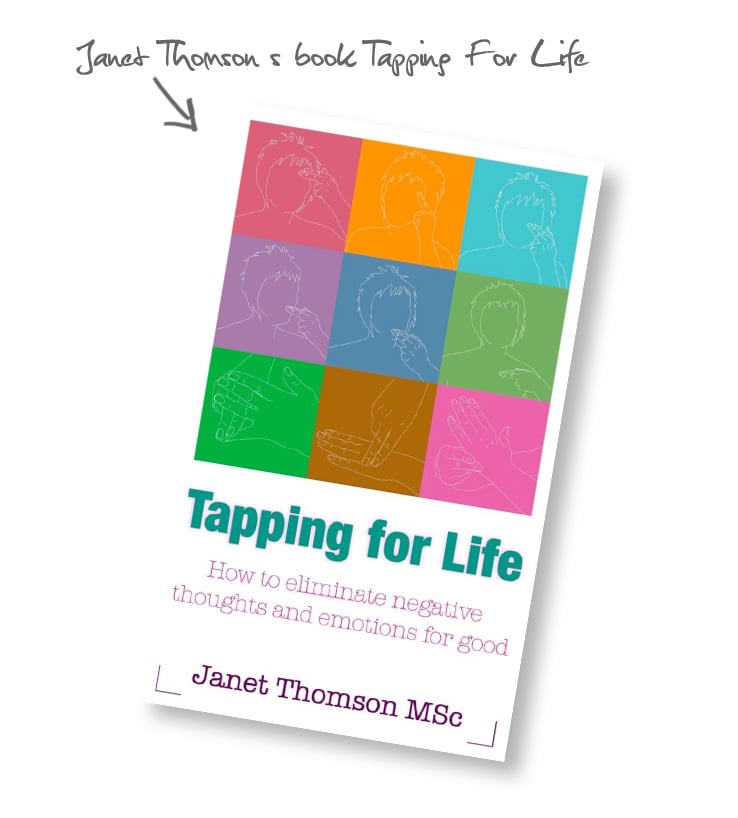
Approximately 1 in 6 people experience a ‘neurotic health problem’ like anxiety or depression every week. And more than 1 in 10 will experience a ‘disabling anxiety disorder’ at some point in their life, according to Anxiety UK. While many treatments for anxiety conditions are counselling or CBT (cognitive behavioural therapy) based, self-care treatments and rituals can also be hugely helpful in managing low-level or daily anxieties. EFT (Emotional Freedom Techniques), commonly known as ‘tapping’ has become increasingly popular for treating anxiety, with fans apparently including the Duchess of Cornwall and Naomie Harris. But just what exactly is tapping? And can it really ease anxiety?

What is EFT Tapping?
Tapping can be used as part of a daily routine to help deal with stress, anxiety and insomnia. It involves identifying stressors, emotions or incidents that are bothering you and addressing them while tapping on 12 points on the body. I asked Janet Thomson, author of 6 books including Tapping For Life to tell me more.

‘Tapping on meridian points was initially discovered by Dr Roger Callahan as an effective way to collapse or eliminate negative emotions. The body has visible transport systems such as blood vessels, the nervous system and lypmphatic system. All of these carry physical elements from oxygen to nutrients.
‘The meridians were discovered many centuries ago in Traditional Chinese Medicine (TCM) as pathways that flow energy. TCM consider the flow of energy as important to health as the flow of blood. Acupuncture is probably the most known therapy to use meridians, but unlike acupuncture where needles are inserted into specific meridian points to increase the flow of energy, Dr Callahan discovered that by tapping on specific points the emotional blocks that cause negative feelings can be collapsed and created Thought Field Therapy as a way to diagnose and treat a variety of emotional disturbances. Many others have taken the principle of tapping and created their own version, but TFT is the original and still the best.’
Who is a suitable candidate for tapping treatments?
‘The beauty of TFT is that its non-invasive and the success rate is really high (normally well over 80%) and there are no harmful or unpleasant side effects. This makes it ideal for anyone who is looking for a drug free alternative to any anxiety or trauma based emotional distress. It’s worth noting that its not a talking therapy, so for someone who does not want to go to counselling and discuss what happened or how they feel, there is a minimum amount of talking involved. In fact sometimes the therapist doesn’t even need to know what the cause of the problem is, as long as they know what emotion they are dealing with, e.g. distress over something that happened (past) or anxiety or fear about something that is happening (current) or fear of the future, they can diagnose a sequence without knowing the cause of the problem.’

Is it something you need professional guidance for, or can you start at home on your own?
‘In my book Tapping For Life I teach the basic technique for people who want to use the technique on themselves. Because there are no side effects, and if you get it wrong (i.e. tap the wrong sequence) it does absolutely no harm, it is the perfect self-help technique. For more complicated emotional distress it is recommended to seek a professional treatment, however with some basic sequences even the most extreme of emotions may be reduced enough to make it tolerable with self-treatment even before you get to a therapist for a full treatment. To learn to use TFT takes just two days. I run certified courses in the UK and have a mixture of people who just want to learn how to use it on themselves and for friends and family and coaches and therapists who want to use it professionally. There really are no barriers and it’s something anyone can learn. Children can even be taught how to treat themselves for any fear or anxiety (such as exam nerves). You don’t have to understand why it works to be able to use it effectively.’
You can find the next course here

Anything else we need to know?
‘The beauty of TFT is that it is elegant, not invasive and very quick. If I am treating a past trauma, when I start the session the client is often distressed even when thinking about it and visibly upset. By the end of the session they can think about and even talk about the “problem” with complete emotional detachment. They know cognitively it happened and that they were upset, but they can’t get the negative feeling back. The most common response I get when I ask, “How strong is the feeling now?” is, “it’s gone I can’t get it back.” Whether it’s an extreme distress, an addiction, fears or phobias, TFT is a very real way to change how someone thinks and feels.’
If you are struggling with anxiety, visit https://www.anxietyuk.org.uk/ for help and information.
READ NEXT: How to Get a Better Night’s Sleep | Health Trends to Know Now
© Wendy Rowe. All Rights Reserved.














